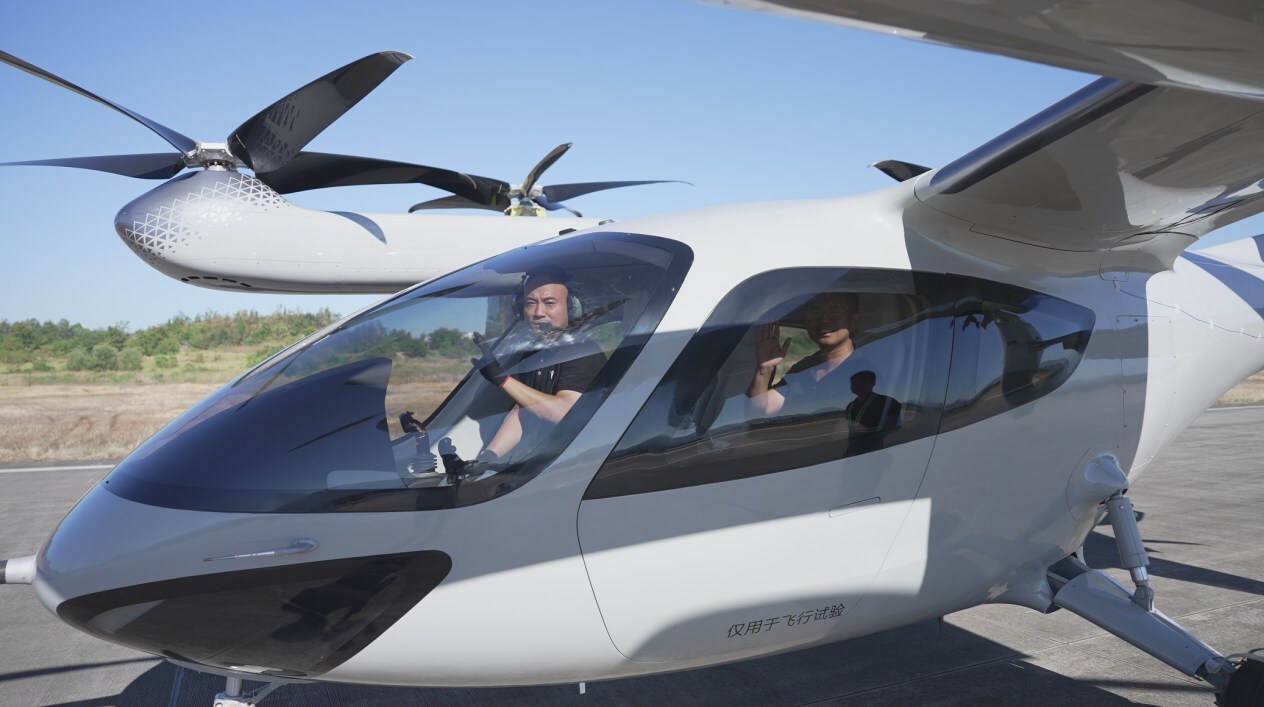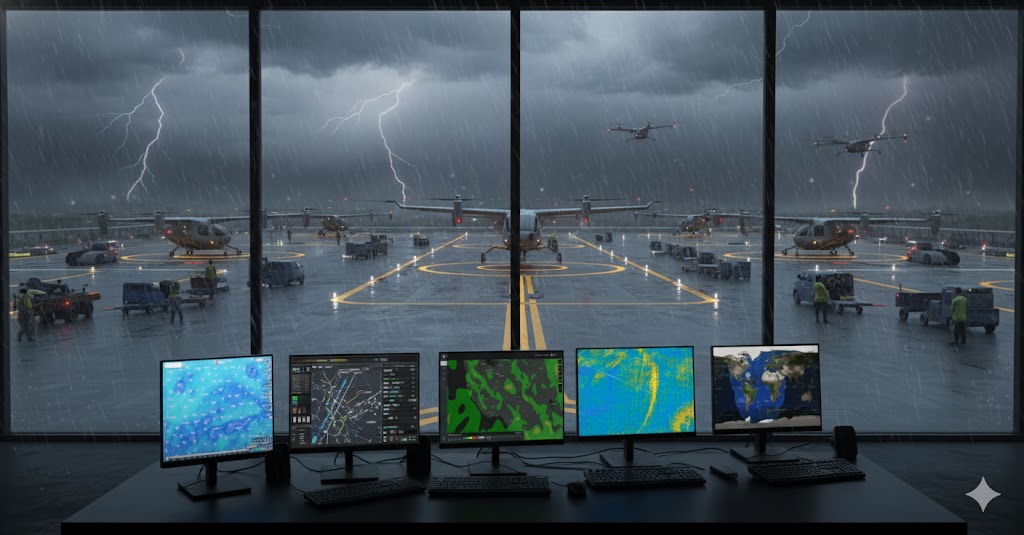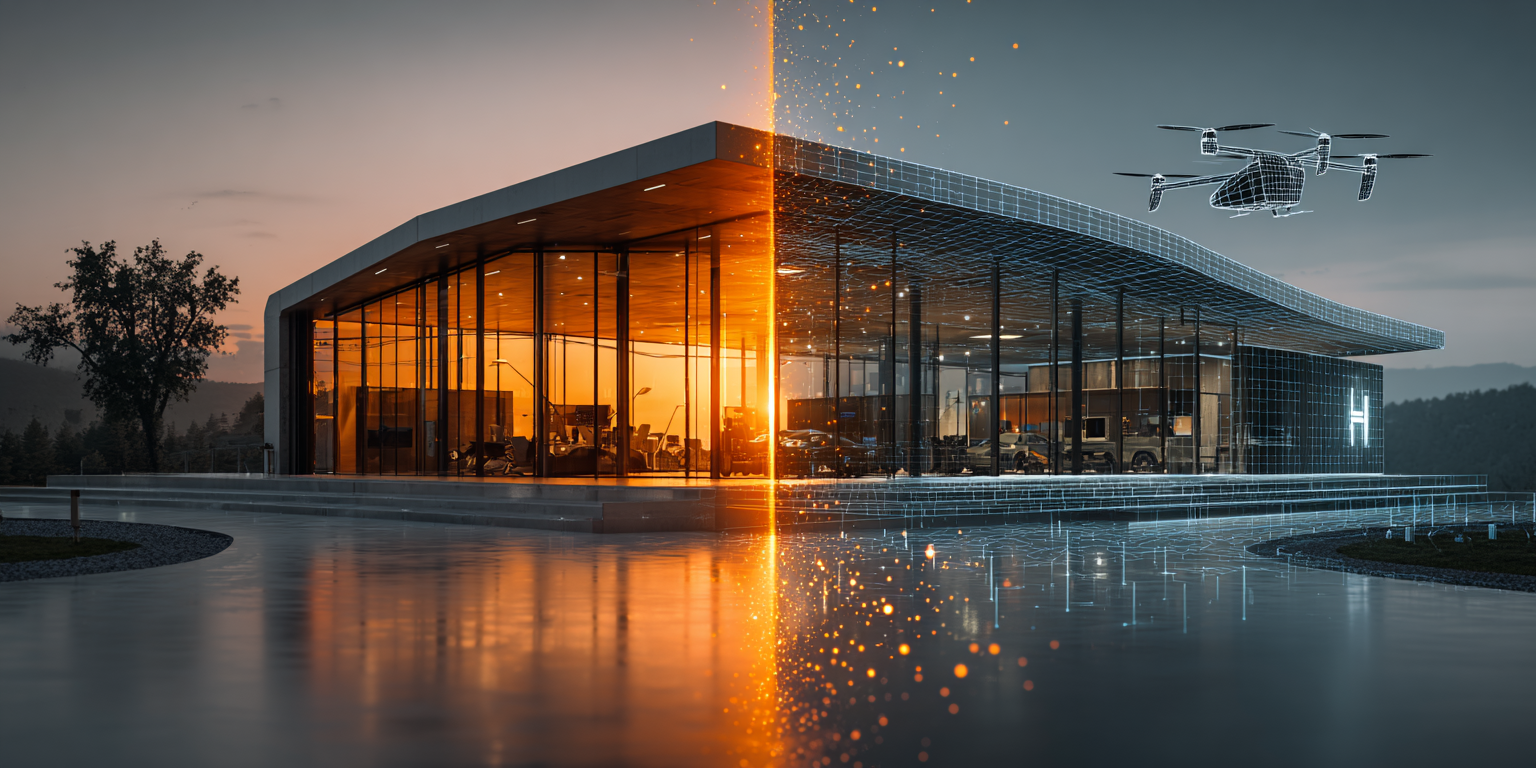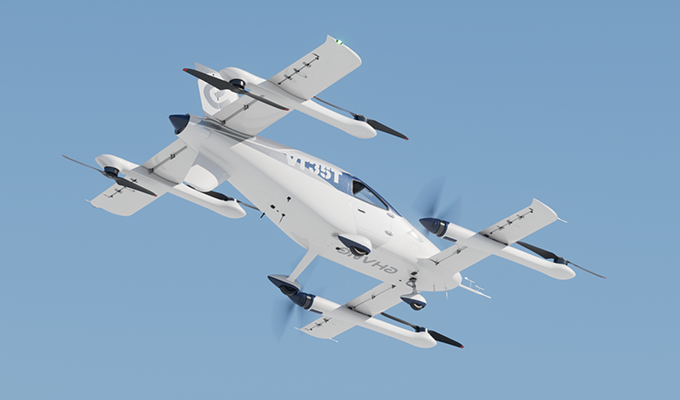One of the most exciting developments in the low-altitude economy is the rivalry between Joby Aviation and Archer Aviation, two companies competing head-to-head to bring electric vertical takeoff and landing aircraft to market. While both pursue the same destination, electric air taxi service, their paths diverge sharply in technology, strategy, and market approach, creating a fascinating study in competitive dynamics.
Current Market Landscape: A $29 Billion Opportunity by 2030
The urban air mobility market presents unprecedented growth potential, valued at $3.58 billion in 2023 and projected to reach $29.19 billion by 2030, with a compound annual growth rate (CAGR) of 34.2%. The broader eVTOL aircraft market is expected to show similar expansion, with projections ranging from $23.21 billion to $37 billion by 2033. These figures reflect a transportation paradigm shift driven by urbanization pressures and technological convergence in electric propulsion, battery systems, and autonomous flight controls.
FAA Certification Progress: Joby Maintains Commanding Lead
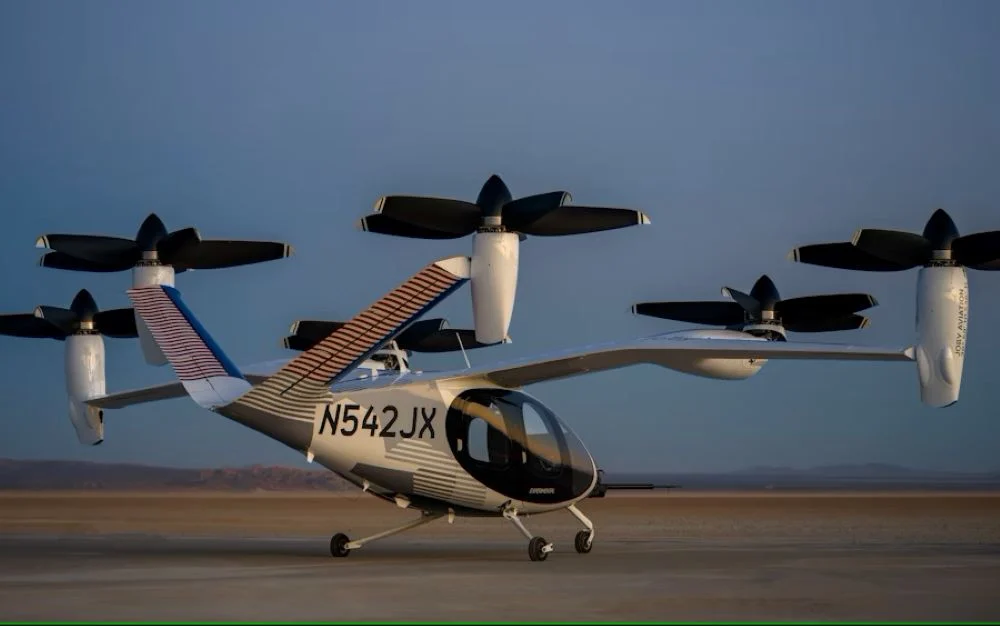 Joby S4 eVTOL
Joby S4 eVTOL
The most significant development in this competitive landscape comes from FAA certification progress, where Joby has built a commanding advantage. As of Q3 2025, Joby has completed approximately 70% of Stage 4 certification requirements, positioning the company for Type Inspection Authorization testing where FAA pilots will directly evaluate its S4 aircraft. This places Joby within reach of the final certification phase, with company officials targeting commercial operations by early 2026.
In stark contrast, Archer’s FAA Type Certification remains only 15% complete, despite securing foundational approvals, including Part 135 air carrier certification and Part 141 pilot training credentials. The company’s slow progress through compliance verification documents has analysts questioning whether Archer can meet its ambitious 2025 UAE launch timeline.
“We are building the future of aviation now. We’re not waiting for it,” declared Archer CEO Adam Goldstein during the company’s Q2 2025 earnings call. However, the reality of certification suggests otherwise. While Archer continues to advance through FAA requirements, the pace remains considerably behind Joby’s progress.
JoeBen Bevirt, Joby’s founder and CEO, has taken a measured approach to public statements about certification timelines. “We only need one to start air tours, and we need two to start a route, especially if it’s an airport route,” Bevirt explained regarding the company’s 2026 launch plans. This understated confidence reflects Joby’s stronger position in the regulatory process.
Aircraft Design Philosophy: Performance vs Urban Optimization
The technical specifications reveal fundamentally different design philosophies. Joby’s S4 aircraft delivers superior performance metrics, boasting a maximum cruise speed of 200 mph and a range of up to 150 miles, powered by six high-performance, dual-wound electric motors that generate 236 kW of peak power. The aircraft achieves remarkable efficiency with an empty weight of 4,300 pounds and maintains Joby’s signature 45 dBA noise level during cruise flight.
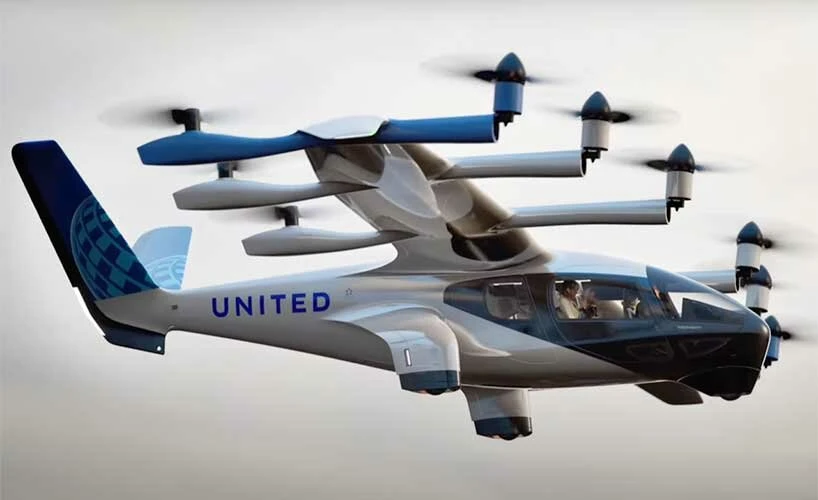 Archer’s Midnight eVTOL
Archer’s Midnight eVTOL
Archer’s Midnight takes a contrasting approach, with 12 electric motors driving six tiltable propellers, reaching speeds of up to 150 mph and offering a more limited range of 20-50 miles, optimized for urban commuting. The aircraft has a significantly higher empty weight of approximately 7,000 pounds, creating what some analysts refer to as a weight penalty that affects operational efficiency.
“Crossing the 50-mile mark at speed is another clear step toward commercialization that shows the maturity of our program,” Goldstein noted after Archer’s 55-mile flight achievement in August 2025. While impressive, this milestone still falls short of Joby’s established range capabilities.
The weight differential between the aircraft creates meaningful operational implications. Joby’s lighter design translates to higher energy efficiency, longer range, and potentially better economics per passenger mile. This advantage becomes crucial when considering the infrastructure constraints of urban vertiports, where space remains at a premium.
| Specification | Joby S4 | Archer Midnight |
| Capacity | 1 pilot + 4 passengers | 1 pilot + 4 passengers |
| Maximum Cruise Speed | 200 mph (322 km/h) | 150 mph (241 km/h) |
| Range | 100-150 miles (161-241 km) | 20-50 miles (32-80 km) |
| Maximum Paylo | 1,000 lb (454 kg) | 1,000+ lb (456+ kg) |
| Maximum Takeoff Weight | 5,300 lb (2,404 kg) | 7,000 lb (3,175 kg) |
| Empty Weight | 4,300 lb (1,950 kg) | Not specified |
| Propulsion System | 6 electric dual-wound motors | 12 electric motors with gearboxes |
| Number of Motors | 6 | 12 |
| Number of Propellers | 6 tilt-propellers | 12 (6 tilt, 6 VTOL-only) |
| Peak Power | 236 kW total | Not specified |
| Battery Configuration | 4 lithium-ion battery packs | 6 independent battery packs |
| Noise Level (Cruise) | 45 dBA | 45 dBA |
| Cruise Altitude | Not specified | 2,000 ft (610 m) |
| Wingspan | 39 ft (11.9 m) | 48 ft (14.6 m) |
| Length | 21 ft (6.4 m) | Not specified |
| Flight Cycles | 10,000+ | 3,000+ |
| Charging Time | Not specified | 10-12 minutes |
| Flights per Day | Not specified |
Strategic Market Positioning: Premium Integration vs Urban Commuting
Joby has pursued a premium positioning strategy, targeting intercity travel with integration into established airline networks through partnerships with Delta Air Lines and United Airlines. The company’s recent acquisition of Blade Air Mobility’s passenger business for up to $125 million provides immediate access to established helicopter service customers in high-demand corridors.
“By combining Joby’s aircraft with Blade’s established network, we’re creating an unmatched foundation for bringing quiet air travel to market,” Bevirt explained. This strategic move gives Joby operational experience and customer relationships that money cannot easily replicate.
Archer has focused on urban commuting with its “flying taxi” model, emphasizing frequent short-haul operations within metropolitan areas. The company’s UAE Launch Edition program represents its primary near-term commercialization strategy, with a focus on partnering with Abu Dhabi Aviation for initial operations.
However, Archer faces scrutiny regarding its reported $6 billion order book. Critics have alleged inflated commitments with limited binding contracts, particularly questioning the nature of high-profile partnerships, including the LA28 Olympics sponsorship. Short-seller Culper Research has specifically challenged Archer’s promotional activities, suggesting they represent costly marketing rather than organic recognition of technical progress.
Development Timelines and Operational Progress
Joby maintains a more conservative but achievable timeline, with five aircraft expected to enter final FAA testing phases by 2025, leading to commercial operations in early 2026. The company has completed over 40,000 flight miles across multiple aircraft and recently achieved the milestone of flying two aircraft simultaneously.
Archer continues to target a commercial launch in the UAE by late 2025, despite facing certification challenges. The company has demonstrated operational progress with four test pilots now regularly conducting Midnight flights and achieving its longest piloted flight of 55 miles in August 2025. However, the ambitious timeline appears increasingly optimistic given the 15% FAA certification completion rate.
“We’ve agreed with the FAA to have multiple TIAs on the program, each targeting a specific system or set of systems to efficiently move through the work as certification test data for each area is matured in parallel,” an Archer executive explained during the Q2 earnings call. This approach suggests the company recognizes the complexity of the certification process while attempting to accelerate progress through parallel testing.
| Milestone | Joby Aviation | Archer Aviation |
| Company Founded | 2009 | 2018 |
| First Full-Scale Transition Flight | 2020 (S4) | 2024 (Midnight) |
| FAA Type Certification Progress (Q3 2025) | ~70% complete | ~15% complete |
| FAA Stage 4 Completion | In progress | Early stages |
| Type Inspection Authorization (TIA) | Initiated Q3 2025 | Not initiated |
| Part 135 Air Carrier Certification | Not specified | June 2024 |
| Part 141 Pilot Training Certification | Not specified | February 2025 |
| Part 145 Maintenance Certification | Not specified | February 2024 |
| Longest Flight Achievement | 100+ miles demonstrated | 55 miles (August 2025) |
| Commercial Launch Target | Early 2026 | Late 2025 (UAE) |
| Primary Launch Markets | US cities, Dubai | UAE, US cities |
| Aircraft in Testing Fleet | 6 aircraft (5 production prototypes) | 3 aircraft (2 demonstrator |
Financial Health and Investment Implications
Both companies maintain strong cash positions, with Archer holding $1.03 billion in liquidity compared to Joby’s approximately $1.1 billion. Wall Street analysts provide mixed but generally optimistic forecasts for both companies, with Joby receiving a 12-month average price target from five analysts, ranging from $10.50 to $10.80. Some estimates suggest a potential upside of $22 within a year if the commercial launch succeeds, implying a 64% gain. Archer analyst targets $13.43 average with Strong Buy rating.
However, investor sentiment faces headwinds from controversy surrounding both companies. Culper Research’s allegations against Archer have created uncertainty, while Joby faces the typical challenges of a pre-revenue technology company operating in a speculative market.
Competitive Advantages and Strategic Risks
Joby’s systematic approach to certification, strategic market positioning, and operational readiness, achieved through the acquisition of Blade, creates multiple competitive moats. The company’s technological leadership, evidenced by a 561-mile hydrogen-electric flight demonstration in 2024, positions it for sustainable competitive advantage.
Archer’s strengths lie in its manufacturing partnerships with Stellantis, defense contracts that provide diversification, and the flexibility of its modular design. Yet questions persist about execution capability, particularly given the slow progress in certification and allegations of misleading investor communications.
Market Outlook and Investment Implications
The competitive dynamic extends beyond simple technological comparison. Joby’s methodical approach to certification, strategic acquisitions, and premium positioning creates multiple pathways to market dominance. The company’s integration with established aviation networks, through Delta and Blade, provides immediate operational advantages once certification is achieved.
Archer maintains strong financial resources and partnership opportunities, but faces mounting pressure to deliver on ambitious timelines while addressing certification challenges and credibility concerns. The company’s focus on international markets may provide alternative commercialization pathways, yet regulatory approval remains the ultimate gatekeeper.
For investors, the choice between these companies represents different risk-reward profiles. Joby offers lower risk with premium market positioning and regulatory progress, while Archer provides higher upside potential if execution challenges can be overcome. The winner may not be determined solely by who reaches commercial service first, but by who can build sustainable, scalable operations that prove the viability of electric air transportation.
This rivalry will ultimately define the early development of the low-altitude economy, with their different approaches providing valuable market testing for the broader eVTOL industry. As urban air mobility transitions from concept to reality, both companies remain positioned to capture significant value in what promises to be one of transportation’s most important paradigm shifts since the advent of commercial aviation.

